15 Front Deltoid Exercises for Strength and Muscle
If you want to sculpt some 3D boulder shoulders, including front deltoid exercises is crucial.
You want to target all three heads of the deltoid, of course:
- Anterior deltoid (Front)
- Medial Delotid (Lateral)
- Rear Deltoid (Back)
The cool thing is that any vertical push movement pattern will target your front and medial deltoid shoulder muscles.
Your rear deltoid muscle can be targeted by focusing on horizontal pull-focused exercises.
The front deltoid muscle fibers also work as a secondary during horizontal pushing exercises (bench, pushups, etc.).
Let’s review the exercises you must prioritize to grow and strengthen your front delts.
Anatomy of the Deltoid Shoulder Muscle
The deltoid shoulder muscle comprises three different heads originating on the lateral end of the humerus shoulder bone, known as the deltoid tuberosity (1).
- Anterior (front)
- Medial (middle)
- Posterior (rear)
For the exercises below, we will focus on the anterior and medial heads of the shoulder blades.
Let’s go over our front delt muscle anatomy. Understanding our anatomy is important when programming for the muscles we want to hit.
NOTE: delt is bro terminology for deltoid
Anterior Deltoid Shoulder Muscle
The Anterior Deltoid Shoulder Muscle is the front head responsible for shoulder flexion.
The anterior deltoid shoulder muscle will be targeted in vertical push movement exercises, such as military presses, pike pushups, overhead presses, and Arnold presses.
They also work as a synergist (secondary) muscle in horizontal push exercises.
Exercises include incline, decline, flat bench presses, and pushups.
Medial Deltoid Shoulder Muscle
The Medial Deltoid Shoulder Muscle is the middle head responsible for shoulder joint abduction.
The medial deltoid muscle will be targeted in vertical push movements and lateral raises with dumbbells, cables, or bands.
Compound vs. Isolations
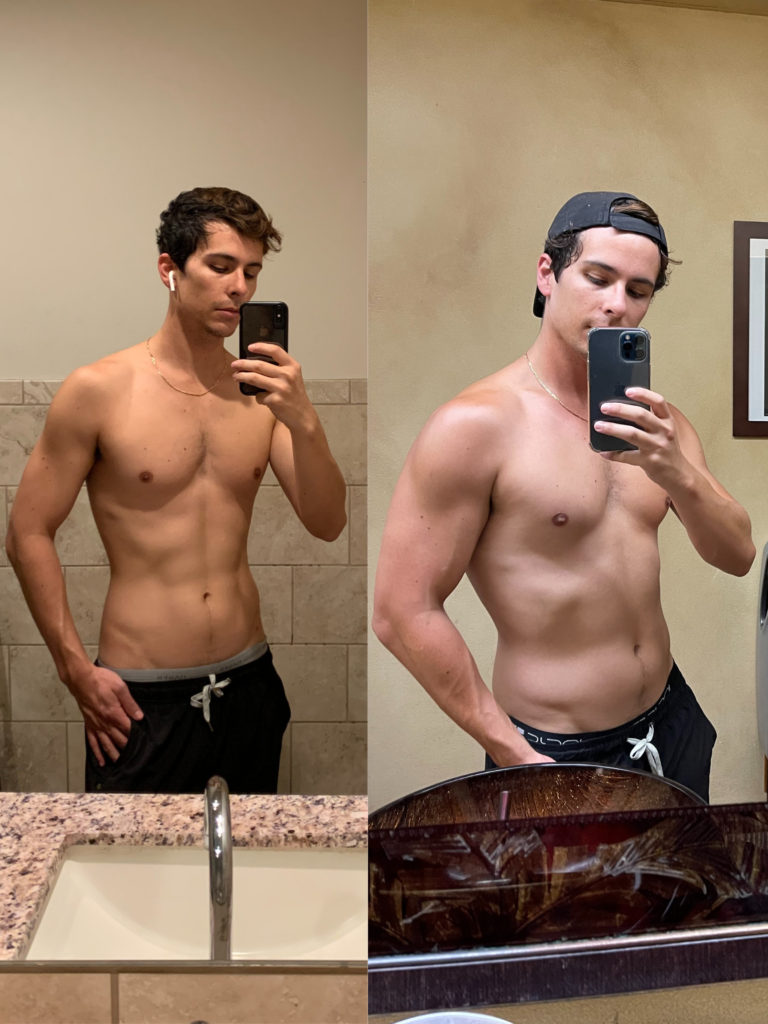
Compound exercises focus on multiple muscle groups in that given exercise, and isolations focus on just one muscle at a time during that exercise.
I like to focus on movement patterns that will target multiple muscle groups. Let’s break it out below:
Vertical Push:
Agonist (main muscles working): Anterior & Medial Deltoids
Synergist (secondary muscles working): Triceps Brachii, Upper & Lower Trapezius (Traps), Serratus Anterior
Horizontal Push:
Agonist (main muscles working): Pectoralis Major
Synergist (secondary muscles working): Triceps & Anterior Deltoid
Horizontal Pull:
Agonist (main muscles working): Posterior Deltoids, Latissimus Dorsi (Lats)
Synergist (secondary muscles working): Biceps Brachii, Middle Trapezius (Traps), Rhomboid Major & Minor
Front Deltoid Exercises
Let’s break down the best front deltoid exercises you need to prioritize.
Focus on this muscle group with two to three exercises per week and 10-20 sets per week among those two to three exercises.
By prioritizing these workouts, you’ll see a boost in anterior deltoid muscle growth, giving you the strong, defined shoulders you’ve been working towards.
Dumbbells
Overhead Press (Pronated Grip)
If you’re looking to make those shoulders pop, the overhead press, also known as the shoulder press, is an exercise you’ll want to add to your routine.
This compound movement targets your front and medial deltoid muscles, giving you that rounded, defined look that’s so sought after.
Additionally, overhead presses can help increase your upper body strength while improving your posture and stability.
Key Notes:
- Sit on a bench with back support. Keep a neutral spine and feet flat on the floor.
- Hold dumbbells at shoulder height with a pronated (palms facing away) grip.
- Press weights overhead until arms are fully extended, then lower back to the starting position.
- Keep elbows slightly in front of shoulders throughout the movement for optimal anterior deltoid activation.
- Keep your core engaged throughout the entire movement.
Overhead Press (Neutral Grip)
A neutral grip overhead press is a very effective exercise if you’re looking to train your front delts a little harder.
While pronated and neutral grips are excellent choices, switching them up and prioritizing one over the other is great, depending on your training goals.
One of the great benefits of a neutral grip press is that it’s easier on the elbow joints and allows a greater range of motion, thus making it easier to overload and achieve hypertrophy and strength.
Key Notes:
- Sit on a bench with back support. Keep a neutral spine and feet flat on the floor.
- Hold dumbbells in each hand with palms facing each other (neutral grip).
- Press weights overhead until arms are fully extended, then lower back to the starting position.
- Keep elbows slightly in front of shoulders throughout the movement.
- Keep your core engaged throughout the entire movement.
Arnold Press
This front delt exercise is a variation of the classic overhead press that Arnold Schwarzenegger himself invented.
The Arnold press doesn’t just target the anterior delt; it also targets the lateral and rear delts.
Key Notes:
- Sit on a bench with back support. Keep a neutral spine and feet flat on the floor.
- Hold dumbbells in each hand at shoulder height with an underhand grip (palms facing toward you).
- Begin by rotating your hands as you press the weights overhead, ending with palms facing forward.
- Lower back down to the starting position while rotating your hands back.
- Once again, keep your core engaged throughout the entire movement of this exercise.
Snatch
The ‘snatch’ is a full-body exercise with vertical push movement included, thus targeting the anterior and medial delts. The snatch also stimulates the quads, glutes, and core.
This exercise is more power-focused than strength and hypertrophy, but it is another great one to include if you have any specific power-related goals in your training.
Key Notes:
- Stand with feet slightly wider than shoulder-width apart, holding one dumbbell between your legs.
- Begin to bend your knees and drive through the floor with your hips as you bring the weight up toward the ceiling in one swift motion.
- As the weight peaks, lock out your arms overhead and stand tall before lowering the dumbbell back to the starting position.
- Keep your core engaged throughout the entire movement.
Front Raises:
If you’re a regular at the gym, you’ve probably seen the broskis busting out front raises on the regular.
Dumbbell front raises are considered an isolation exercise.
This is an excellent addition to your shoulder day after prioritizing your compound lifts (vertical push exercises like overhead pressing)
Because you are only working that front deltoid muscle, which isn’t a large muscle, you’ll typically use light weights.
Key Notes:
- Stand with feet shoulder-width apart, holding a dumbbell in each hand.
- Begin with your arms at your sides and palms facing inwards (down).
- Lift the weights straight out in front of you until they reach about shoulder height.
- Hold for a second before slowly lowering the weights back to the starting position.
- Keep a slight bend in your elbows throughout and your core engaged.
Bench (Neutral Grip)
This is going to include your flat and incline dumbbell press.
A neutral grip, different from a pronated grip (wide-grip bench press), will involve your palms facing each other during the pressing.
Any horizontal pushing using the neutral grip (palms facing each other) will prioritize the pectoralis major (pecs), triceps, and anterior deltoids.
However, the anterior delts and triceps will take more of the load when using the neutral grip.
Key Notes:
- Start by sitting on a flat or incline bench with a dumbbell in each hand, held at your sides.
- With palms facing inward, slowly lower the weights until they are even with your chest.
- Press the weights upward and slightly inward toward each other as you squeeze your chest muscles.
Barbells:
Barbell Overhead Press
The barbell overhead press is a great compound exercise that helps improve overall strength. This exercise requires using your entire body, which makes it ideal for building strength and muscle.
Key Notes:
- Begin by standing with your feet shoulder-width apart and a barbell resting on your upper chest.
- Grasp the bar slightly wider than shoulder width with palms facing forward.
- Press the bar up vertically to keep your core engaged until your arms are fully extended.
- Hold for a second before slowly lowering the bar to the starting position.
- Keep a slight tuck in your pelvis and the core engaged (squeeze your core) to keep yourself upright and spin straight. Do not over-extend your back.
Landmine Press
The landmine is a great exercise for beginners, especially if you need to work on more range of motion with shoulder flexion.
This allows those who experience shoulder pain to get a good front delt workout, where you can overload the front deltoid muscle without experiencing any pain.
You’ll need a landmine attachment for the Olympic barbell or a steady corner to prop your barbell up against.
Key Notes:
- Begin by setting up a barbell in a landmine attachment or wedging it into the corner of a room.
- Stand facing the end of the bar with your feet shoulder-width apart.
- Grasp the end of the bar with two hands and hold it close to your chest.
- Press the bar upward and away from your chest, keeping your core engaged and feet planted.
- Slowly lower the bar back to the starting position, keeping your elbow close to your body throughout the movement.
- If you want to progress in this challenge, you can perform a single-arm landmine following the steps above with one hand at a time.
Bodyweight:
Pike Push Ups:
The pike pushup is a great vertical push bodyweight exercise that targets the anterior and medial deltoids of the shoulder, as well as your triceps, upper and lower traps, and serratus anterior.
This is more advanced and not recommended for beginners, but if calisthenics (bodyweight training) is your thing, then this is something you should include for your vertical pressing.
There are also regressions and progressions to this exercise. Starting from easiest to most complicated:
- Pike Push Ups – feet on the floor
- Pike Push Ups – feet elevated on a box/step
- Pike Push Ups – Handstand + pushups
Don’t worry; you don’t need to get crazy with it like #3. You only need to master #1 to achieve hypertrophy with the front deltoid.
Key Notes [For Pike Pushups with feet on the floor]:
- Begin in a standard pushup position with your hands shoulder-width apart and feet hip-width apart.
- Walk your feet closer to your hands, forming an inverted V
- Keep your arms straight and lower your head towards the ground, bending at the elbows.
- Push yourself back to the starting position, engaging your shoulders and triceps.
- Repeat for the desired number of reps.
- For added difficulty, you can elevate your feet on a bench or chair to increase the angle of the movement.
Reasons You Should Include Front Delt Exercises In Your Strength Training Program
There are a variety of reasons why you should be training the anterior head of the shoulder muscle (front delt).
Training for Aesthetics:
If you want that 3D shoulder shell shape, you have to focus on exercises that target all three heads for delt growth:
Vertical pushing will target the anterior and medial (also known as lateral) deltoid shoulder muscles.
Horizontal pulling will prioritize the rear deltoid shoulder muscle. You can find my list of exercises for those here.
Start with compound exercises, then include isolation exercises in your program for the deltoids. I’ll discuss more on that right below.
Training Posture Improvement:
Like any other muscle group, it’s essential to strengthen the deltoids to help improve overall posture. Strength training is more than just aesthetics. It helps with daily movement and activities of daily living.
Constantly sitting at a desk or on the phone without prioritizing any movement throughout the day can cause poor posture, with your shoulder rolling forward.
Therefore, strengthening the deltoids (along with other upper body muscles) can help improve overall posture and prevent imbalances. Balancing pushing and pulling movements is crucial to maintain a healthy posture.
Training for Functionality:
Strong deltoids are essential for daily activities such as pushing, lifting, and even carrying objects. This is why I stress the importance of hip hinge and deadlifting. It comes down to what you do in your normal daily life (picking up the laundry basket). We use our deltoids in almost every upper body movement, so it’s important to train them for functionality and not just aesthetics.
Key Considerations for Successfully Performing Any Front Deltoid Exercise
You want to prioritize compound exercises before isolation exercises. This helps you master the basics with these movement patterns and work out multiple muscles simultaneously with each movement pattern (horizontal push and vertical push).
It’s not to say you can’t include any isolations. Just prioritize your movement patterns first, then add isolations later in the workout or later in the week for your training.
Which brings me to volume. You want to ensure enough volume in your training to help grow that anterior deltoid but don’t add too much volume into the program.
10 to 20 sets per muscle group per week is the general recommendation.
This can equate to:
- Four exercises
- Three sets
That comes out to 12 sets each week, targeting the front delts on a 3-day split per week.
Feel free to read that a few times to let it digest!
Let’s break it down even further. Here are some examples of the exercises that can be:
3 compound exercises for the front delts:
- Dumbbell Overhead Press | 3 sets
- Arnold Press | 3 sets
- Dumbbell Incline Bench | 3 sets
1 isolation exercise for the front delts:
- Front Raises | 3 sets
Consider this with any muscle group you are training for hypertrophy.
Taking it to the Next Level: How to Progress Front Delt Development
Barbells and Single Arm variations are the best progressions regarding front delt exercises.
You can even take this further and add in drop sets, supersets, and pyramid sets into your training program to push your muscles to their limits and promote growth.
Some examples include:
- Single Arm Landmine
- Single Arm Overhead Press / Kneeling Overhead Press
- Seated Overhead Press
As you progress with the weight, your front delt will grow to keep up with the load.
Remember that adding too much volume too fast can lead to overtraining and injury, so use caution when progressing in your training.
Having a progression plan is critical. In addition to increasing weights, you can also adjust reps and sets accordingly.
Another important factor in progressing front delt development is rest and recovery. Adequate sleep and proper nutrition are essential for muscle growth and recovery. Make sure to prioritize these aspects in your training plan.
Incorporating other exercises and variations for the front delts can also help with progression. Some options include:
- Cable Front Raises
- Resistance Band Front Raises
- Overhead Barbell Press
A well-rounded approach to training and progressions is critical for developing robust and defined front delts. Remember to listen to your body and make adjustments as needed to prevent injury and achieve optimal results.
Keep challenging yourself, but also remember to give your muscles the proper rest and recovery they need to grow.
Frequently Asked Questions
Will Front Raises Build Muscle?
Yes. It’s an isolation exercise that strictly focuses on the anterior deltoid (front delt) shoulder muscle. If you utilize the principles of progressive overload, then you will see gains in your front deltoid shoulder muscle from doing front raises.
Is One Front Delt Exercise Enough?
No. You want to make sure you have enough volume in your training program for each muscle group if you want to see growth. So on a 3-day split, you would need a minimum of 10 weekly sets that target the front delt shoulder muscle. This is why I stress utilizing your movement patterns as the priority because they allow you to target multiple muscle groups at once.
Do I need to train my front delts?
Yes. There are many reasons why you should train your front delts but especially for aesthetics, if you want to see shoulder growth, you need to be training all 3 heads of the deltoid shoulder muscle (front, medial, and rear).
Best Front Delt Exercise?
There is no best delt exercise. Any vertical and horizontal push exercise is going to help your shoulders grow. That includes your overhead pressing and neutral grip dumbbell bench press. Isolations specifically targeting that shoulder muscle will also suffice. For example, front raises.
Are Front Delt Exercises Necessary?
Yes. Exercises targeting the front deltoid muscle are necessary for aesthetics and improving overall posture. They are also necessary for improving overall strength. If you plan to compete in bodybuilding (aesthetics), or compete in powerlifting (strength/power), they’re even more necessary.
What are front delt exercises?
Front delt exercises involve any vertical push movement pattern in a given exercise. This includes your overhead press, landmine press, pike pushups, etc. Exercises focusing on the horizontal push movement pattern like bench pressing, will have the front delts working as a synergist (secondary) muscle.
How many front delt exercises should I do?
It depends on your goals. If shoulders are at the top of your list for muscles you want to improve and grow, then I recommend a minimum of 12 sets per week, focusing on the front delts (4 exercises). That is on a 3-day split. If you’re training on a 4-5 day split, I recommend 15 sets (3-5 exercises). Exercises can include a mix of vertical and horizontal push and shoulder isolation exercises.
Wrapping Up: Front Deltoid Exercises
To Summarize:
Dumbbells
- Overhead press (Pronated Grip)
2. Overhead Press (Neutral Grip)
3. Arnold Press
4. Snatch
5. Front Raises
6. Bench (Neutral Grip)
Barbells:
1. Barbell Overhead Press
2. Landmine Press
Bodyweight:
- Pike Push Ups:
Incorporating front delt exercises into your workout routine for aesthetics, strength, and overall shoulder health is essential. The number of exercises and sets will depend on individual goals and training split.
Dumbbells, barbells, and bodyweight exercises can all effectively target the front deltoid muscle. Remember always to use proper form and technique when performing any exercise to avoid injury and maximize results.
Keep challenging yourself by increasing weight, reps, or sets as your strength and endurance improves.
Consistency is obviously key when it comes to achieving any fitness goal, so stick with it and trust the process.
I incorporate all of these exercises into my 5-day split routine. Not all at once! But I mix it up with these exercises over time.
Are you struggling to grow your front delts? Share your experience and any other comments below!
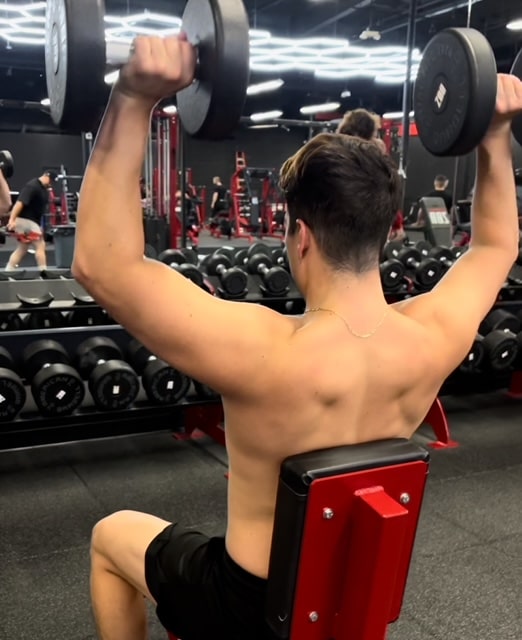
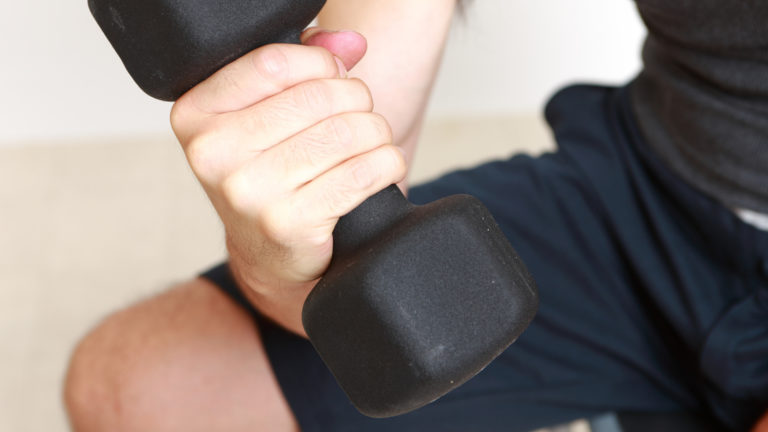
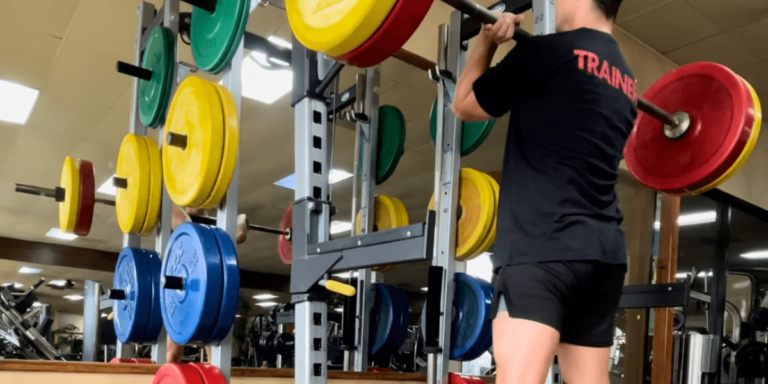


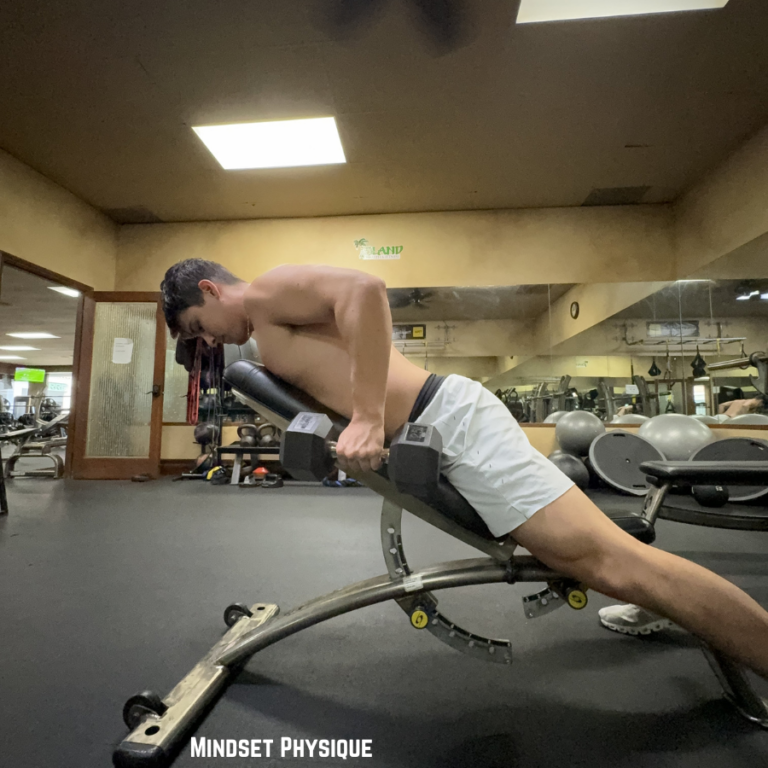

Very well presented. Every quote was awesome and thanks for sharing the content. Keep sharing and keep motivating others.
Thank you so much! Just trying to help people simplify fitness and enjoy the overall process! Glad you found this helpful.
I am not sure where youre getting your info but good topic I needs to spend some time learning much more or understanding more Thanks for magnificent info I was looking for this information for my mission